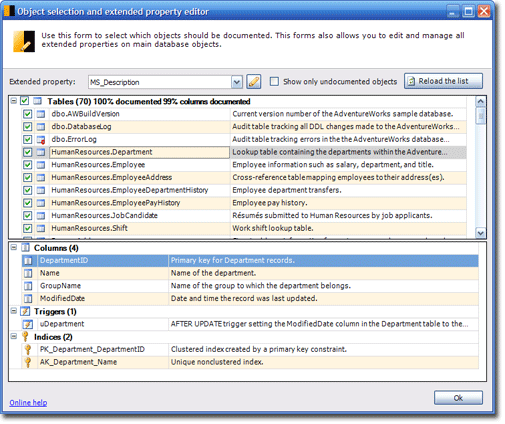I’ve just uploaded a new version of dbdesc. This version adds some useful features that I’m sure many of you will love.
The first one addresses a common scenario: Your database has hundreds of tables, views and stored procedures. You need to provide the database documentation to someone (a developer team, a client, etc.) but she only needs to know about part of your database. So you manually select and deselect individual objects and generate the documentation. So far so good.
The problem here is that chances are that you’ll need to generate that documentation for her in the future, what means that you’ll need to select and deselect those same objects again. Not fun.
Dbdesc 2.2 allows you to save object selections, as many as you need. To save the current selection, just give it a name. Saved selections show up right in the advanced form.
Another main new feature, that I hope will improve in upcoming versions, it’s the ability to customize the internal report. As you know, dbdesc has two report engines. One of them is based on XSL templates which allow you to fully control the contents, design and format of the documentation. The other one is a third-party report component which generates nice reports ready to be printed.
Until now, using the report component, you could choose only between three different style sheets to change the appearance of the report and they were limited, basically, to change font colors. Now, dbdesc includes a style sheet editor that will allow you to modify not only the colors of the report but to change the cover page, include you company logo, change the headers and footers, modify fonts, etc. Hopefully this will help you match the style of these reports to your corporate look and feel.
This version includes more features and improvements that you can check in the change log.
As always, I’ll appreciate any comments or suggestions. Please send me your comments.
![]() Richard Dudley has published a full review of my database documentation tool, dbdesc, and the SQL Server DTS documenter, dtsdoc. Here is the article abstract:
Richard Dudley has published a full review of my database documentation tool, dbdesc, and the SQL Server DTS documenter, dtsdoc. Here is the article abstract:

 This week, the
This week, the